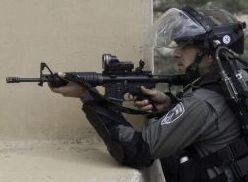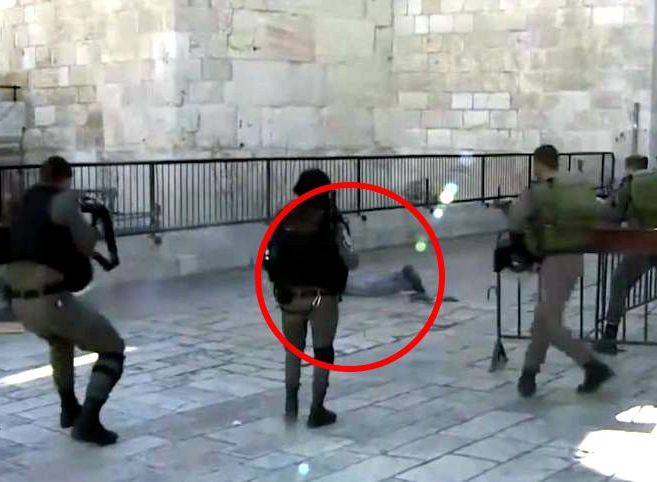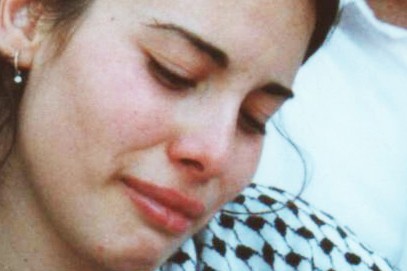Extra-judicial executions of Palestinians by Israeli police and security forces and the failure to investigate these events (Updated 14 March 2017)
Extra-judicial executions of Palestinians by Israeli police and security forces and the failure to investigate these events
Issued September 2016; Updated 14 March 2017
[CLICK HERE to read or download this briefing paper in PDF format]
This short paper addresses suspected cases of extra-judicial executions (EJEs) of Palestinians by Israeli forces in the fall of 2015 and winter of 2016 and the failure of the Israeli authorities to investigate these events, despite complaints filed and requests made by Adalah and Addameer – Prisoner Support and Human Rights Association to do so.
I. The relaxation of the open-fire police regulations and “shoot-to-kill” policy
In September 2015, during a peak in the violence, the Israeli government announced a relaxation in the police’s detailed ‘rules of engagement’.[1] The amendment of these rules of engagement led to a dramatic increase in the unjustifiable use of lethal force by police, apparently in unjustifiable circumstances, including many instances of what appear to be extra-judicial executions (EJEs), with police resorting to the harshest, often lethal means rather than first attempting to arrest the suspects. This conclusion is corroborated by video evidence and/or first-hand witness accounts in many cases. This ‘shoot to kill’ phenomenon against Palestinian youth has become alarmingly widespread, particularly in East Jerusalem, as well as other parts of the West Bank.[2] EJEs are effectively prohibited under the UN Convention Against Torture (CAT) and the International Covenant on Civil and Political Rights (ICCPR).
Politicians and senior police officers also openly called for the extra-judicial killing of suspects, and urged civilians to carry guns in statements that effectively endorse the extra-judicial execution of Palestinians. For example, Jerusalem District Police Commander Moshe Edri was quoted as saying, “Anyone who stabs Jews or hurts innocent people is due to be killed.” Interior Security Minister Gilad Erdan declared that, “every terrorist should know that he will not survive the attack he is about to commit.” MK Yair Lapid stated, “You have to shoot to kill anyone who pulls out a knife or screwdriver.” Jerusalem Mayor Nir Barkat called on Israeli civilians who own firearms to carry them at all times.[3]
The broad circumstances in which Israeli police officers are permitted to use firearms are set out in a set of general ‘open-fire regulations’. These regulations, which were not altered by the recent amendment, are in the public domain and based in the criminal law. According to these regulations, the use of firearms is subject to a number of conditions, including that: there must be a real, immediate danger to a person’s life and limb as a result of the action; there must be no possibility of using another means to prevent the attack; the amount of gunfire must not exceed what is reasonable to prevent the action; and the harm that might result from gunfire must be commensurate with the harm it seeks to prevent.[4]
The new regulations permit officers to open fire with live ammunition, as an initial option, preceding any prior attempt to deploy non-lethal weapons – against stone-throwers and those shooting fireworks. The regulations were updated, then vetted and authorized by Israeli Attorney General (AG) Avichai Mandelblit, and distributed to officers in December 2015 but remained classified. Sections of the regulations were finally revealed in June 2016, in response to a petition submitted by Adalah to the Lod District Court after the police refused to release specific details.[5] However, despite releasing parts of its updated open-fire regulations to Adalah, the police initially refused to reveal significant sections of the regulations. In November 2016, the court accepted Adalah’s petition to release the regulations in their entirety. The state appealed the decision and the case remains pending.
According to the new regulations, “an officer is permitted to open fire [with live ammunition] directly on an individual who clearly appears to be throwing or is about to throw a firebomb, or who is shooting or is about to shoot fireworks, in order to prevent endangerment.” It further specified “stone throwing using a slingshot” as an example of the sort of situation that would justify the use of live ammunition.
The new regulations contradict existing general guidelines according to which the use of a deadly weapon by officers is permitted only when there is substantiated fear of danger to the life of an officer or other individual, and only if there is no other means by which this danger may be prevented.
The conclusion that the Israeli security forces are implementing a de facto and illegal policy of “shoot to kill” against Palestinians is supported by five case examples from Adalah’s case docket (see Case Chart below). Adalah, together with Addameer, has represented the families of the deceased in five cases of suspected EJEs before the Israeli authorities. The cases concern incidents in which police opened deadly fire at Palestinians who appear not to have posed an imminent danger to them or to others when they were shot. To date, four of the 5 cases have been closed with the finding that “no crime was committed;” Adalah has filed appeals in 3 of the 4 cases, one of which was denied, while the other two remain pending. The fifth case also remains pending.[6]
II. Failure of Israeli authorities to investigate EJEs
The decisions by Mahash, the Ministry of Justice Police Investigation Unit, to close nearly all the EJE cases so far are the latest examples of the extensive impunity granted to Israel’s security forces for the killings of and brutality against Palestinians. To place it into context: based on official figures, between 2011 and 2013, 11,282 complaints against the police were filed to Mahash. Out of these complaints, 93% were closed by Mahash with or without investigation; 3.3% led to disciplinary actions against police officers; and only 2.7% led to any prosecution. The recent cases of EJEs demonstrate again the ongoing absence of accountability and unwillingness of Mahash to genuinely investigate alleged violations of the law by its security forces.
In response to a letter sent by Adalah in October 2015 demanding an immediate investigation into the killing and injury of Palestinians in violation of the rules of engagement by the Israeli police, the Attorney General (AG) merely stated that he had stressed the importance of the open-fire regulations to the police and other relevant forces working on the ground, and that the cases in question had been passed to the “relevant authorities.” In the letter, Adalah cited three cases of suspected EJEs, including the case of Fadi Alloun, subject of one of the aforementioned complaints by Adalah and Addameer, and 30-year-old Esaraa Abed, a mother of three from Nazareth who was shot dead by police at the central bus station in Afula as she stood motionless before them.[7]
This inadequate response from the AG, the most senior lawyer in the state, and the decisions of Mahash to close investigation files, supports the conclusion that there is a lack of state interest in investigating these cases of EJEs. This deliberate omission results in the denial of accountability to the deceased and their families, and both dehumanizes the victims and creates an environment of impunity in which members of the Israeli security forces are not deterred by the state authorities from committing EJEs against Palestinians, even when they pose no threat to life. When Israeli security forces feel assured that the investigatory authorities will not act against them for violating the open-fire regulations, in most cases failing to conduct even a limited investigation into death cases involving Palestinians, further cases of EJEs are near-inevitable.
III. Denial of Autopsies, Failure to Release the Bodies of the Deceased
Perhaps the starkest indication of Israel’s unwillingness to conduct proper investigations into these killings is its repeated failure to conduct and/or denial of permission to conduct autopsies. Further, the Israel police followed a policy of withholding the bodies of extrajudicially-executed Palestinians, storing them in deep-freezers, and imposing severe conditions on their release to the families. These conditions often included that the bodies should be buried immediately without autopsy; that the families bury the deceased in one a few cemeteries chosen by the Israeli police; to invite only 25 family members to the funeral; and to pay thousands of shekels as a guarantee that they would abide by the rules. In some cases the authorities also reneged on agreements made with the families of the deceased for their release for autopsy and/or burial.[8] The withholding of bodies obstructs the possibility of conducting a credible investigation into the circumstances of the alleged EJEs and a proper autopsy and creates strong fears of attempts to cover-up the facts of these killings.[9]
In addition to the denial or at least the delay of an autopsy, the withholding of the bodies in itself constitutes a serious violation of international humanitarian and human rights law. All human beings have the right to a prompt, decent, and dignified burial as an integral part of the right to human dignity, which also applies after death. The policy further violates the rights to freedom of religion to practice culture, by preventing the families from mourning and burying the bodies in accordance with their faith and the traditional rites and ceremonies of their communities.
On 5 May 2016, representatives of the state announced Israel’s intention to release the dead bodies of Palestinians that it has been withholding “within a short space of time”. The announcement came during an Israeli Supreme Court hearing held on petitions submitted by Adalah and Addameer to demand that Israel immediately release the bodies of dead Palestinians from East Jerusalem detained by the Israeli police.[10] In the aftermath of the hearing Israel released several of the bodies, including that of Mu’taz Ewisat (see case study 4).
IV. Position of the UN Committee Against Torture on EJEs by Israeli forces
On 13 May 2016, the UN Committee Against Torture issued over 50 concluding observations to Israel following its review of the state’s compliance with the UN Convention Against Torture (CAT), to which it has been a party since 1991.[11]
Addressing the cases of EJEs brought by Adalah and human rights partners, the Committee raised concerns at the allegations of excessive use of force, including lethal force, by Israel security forces against Palestinians in the West Bank, including East Jerusalem, and the access-restricted areas (ARAs) of the Gaza Strip, particularly in the context of demonstrations, in response to attacks or alleged attacks against Israeli civilians or security forces, and to enforce the ARAs of the Gaza Strip. The Committee concluded that Israel should ensure that “the rules of engagement or regulations on opening fire are fully consistent with the Convention and other relevant international standards” and that “all instances and allegations of excessive use of force are investigated promptly, effectively and impartially by an independent body, that alleged perpetrators are duly prosecuted and, if found guilty, adequately sanctioned” (para. 32, 33).
Notably the UN High Commissioner for Human Rights, in a report in March 2016, also stated that, “some of these responses strongly suggest unlawful killings, including possible extrajudicial executions” (A/HRC/31/40, para. 10).
The UN CAT also issued concluding observations regarding the return of the deceased Palestinian bodies. While noting Israel’s new agreement to initiate the return of the bodies, the Committee urged Israel “to return the bodies of the Palestinians that have not yet been returned to their relatives as soon as possible so they can be buried in accordance with their traditions and religious customs, and to avoid that similar situations are repeated in the future.” (para. 42, 43)
V. Chart of Complaints, updated 11 March 2017
CLICK HERE for more details on each of these cases, including links to video evidence wherever available.
|
Case/complaint |
State’s response |
Current status |
|
1. Fadi Alloun, 19 years old, Musrara neighborhood, East Jerusalem.
Complaint filed 10/15 |
Case closed in 4/16: “No crime has been committed.” |
Adalah sent a preliminary appeal to the AG on 1 September 2016, which is pending. Mahash finally provided Adalah with the investigation materials (in January 2017) after Adalah threatened legal action in letter dated December 2016 if it continued to withhold them. Adalah will submit additional arguments in its appeal based on the information contained in the investigation material. |
|
2. Muhammad Abu Khalaf, 19 years old, Kufr ‘Aqab, West Bank.
Complaint filed 4/16 |
Case closed in 5/16: “No crime has been committed.” |
Adalah is still waiting for a response to its request for the investigation file. On 15 December 2016 Adalah received a copy of the autopsy report from the Palestinian doctor who participated in the autopsy. |
|
3. Ahmad Abu Shaaban, 22 years old, Ras al-Amud, East Jerusalem.
Complaint filed 1/16 |
Case closed in 6/16: “No crime has been committed.” |
Adalah filed an appeal to the State Attorney on 27 July 2016, and is awaiting response. |
|
4. Mu’taz Ewisat, 16 years old, Jabal al-Mukaber, East Jerusalem.
Complaint filed in 1/16 |
No response to date. |
Adalah is still awaiting the state’s response to its complaint. On 15 December 2016 Adalah received a copy of the autopsy report from the Palestinian doctor who participated in the autopsy, and will now submit additional arguments in its complaint based on the report. |
|
5. Mustafa Khateeb, 17 years old, East Jerusalem.
Complaint filed in 12/15 |
Case closed in 4/16: “No crime has been committed”, according to the AG. |
Adalah filed an appeal in 8/16 against Mahash’s decision to close the investigation on 20 June 2016. Appeal was denied in February 2017. |
[1] According to media reports, the relaxation of these rules applies to the areas of East Jerusalem, the Naqab/Negev and the Galilee. See, e.g. Barak Ravid, Yaniv Kubovich, Nir Hasson and Jonathan Lis, “We will also fight stone-throwers also in the Galilee and Negev,” Haaretz, 16 September 2016 (in Hebrew).
[2] See also B’Tselem, “Unjustified use of lethal force and execution of Palestinians who stabbed or were suspected of attempted stabbings,” 16 December 2015.
[3] See Press Release, “Human Rights Organizations in Israel: Politicians’ calls to police and soldiers to shoot rather than arrest endorse the killing of Palestinians,” 14 October 2015.
[5] Administrative Petition 23001-12-15, Adalah v. The Israel Police. The partially censored version of the regulations that was provided to Adalah. Adalah is now waiting for the court to decide on the state’s appeal against its decision to accept Adalah’s petition and release the regulations in their entirety.
[6] Haaretz reports that the remaining case, that of 16-year-old Mu’taz Ewisat, has been closed but the official decision has not yet been released.
[8] See, Adalah and Addameer, “Israeli Occupation forces continue to withhold the bodies of deceased Palestinians, and renege on conditions of release,” 1 March 2016.
[9] See also Al-Haq, “From Killing to Burial: Questions Left Unanswered,” 10 March 2016.
[10] See Adalah, “Israeli government commits before Supreme Court to release withheld Palestinian bodies in the near future”, 5 May 2016.















